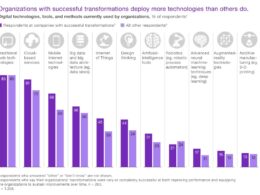This is a republication of the article below, with the title above.
No Weak Links: How To Ensure A Seamless Patient-Centric Virtual Healthcare Solution
Forbes, Forbes Councils Member
Jiang Li
Sep 15, 2022,0
Jiang Li, Ph.D., is the Founder and CEO of Vivalink, Inc.
Site Editor:
Joaquim Cardoso MSc.
health transformation — journal
September 15, 2022
Executive Summary:
- As people grow more accustomed to medical-grade wearable devices, it’s more feasible than ever to collect quality health data, but that’s only the first step
- The data has to be collected, transmitted, analyzed and presented.
- Even if we as an industry can engage the majority of the population in using RPM, just wearing or using the devices won’t provide tangible information …
- if protocols aren’t followed to ensure quality data that’s ultimately useful for providing better care.
ORIGINAL PUBLICATION (full version)

There has been a period of rapid development of virtual healthcare solutions all over the world, partly driven by the pandemic.
As people grow more accustomed to medical-grade wearable devices, it’s more feasible than ever to collect quality health data, but that’s only the first step.
The data has to be collected, transmitted, analyzed and presented.
As people grow more accustomed to medical-grade wearable devices, it’s more feasible than ever to collect quality health data, but that’s only the first step.
The data has to be collected, transmitted, analyzed and presented.
Access to information improves the patient experience only if the information is presented in a clear, concise manner that’s easy to understand and supports the connection with the provider.
Then the provider must be able to easily assess the relevant information to inform diagnostics and treatment choices.
However, the communication chain between patients and providers has historically included weak links that caused breakdowns in information transfer and ultimately a less effective care cycle.
How do we strengthen each link to ensure smooth, comprehensive data transfer to make the entire process viable?

Let’s take it step by step, starting with the choice of sensors.
The objective is to capture medical-grade human vitals while being minimally invasive to a patient.
A device must provide passive monitoring of the relevant required statistics (temperature, heart rate, respiratory rate, pulse oximetry, etc.) while being small and comfortable enough not to interfere with daily life.
- 1.Patient adherence is one of the primary challenges to remote patient monitoring (RPM) success.
- 2.Once the data is collected, the next challenge is data transmission.
- 3.The third link in the chain is the user interface.
- 4.The last link in the chain is the provider interface.
1.Patient adherence is one of the primary challenges to remote patient monitoring (RPM) success.
According to MSI International, Americans cite convenience and efficiency as the top benefits of RPM, with two-thirds preferring wearables to implants.
There are multiple (RPM) options, including wireless sensors and a growing sector of contactless technology.
For example, there are more familiar reusable, rechargeable ECG patches that record multiple cardiac vitals, as well as systems that monitor physiological statistics using optical sensors while others employ video and radar.
Whatever the method, the goal is to create a minimally invasive yet accurate means to collect quality data.
After all, if patients aren’t comfortable using the devices, the process is moot.
They must adhere to protocol to facilitate data collection; their compliance is the foundation for the information stream.
2.Once the data is collected, the next challenge is data transmission.
Ideally, the technology assumes the burden so there’s no work required by the patient.
Effortless edge connectivity should ensure an automated process to process the data with a system that can deal with connectivity challenges, network interruptions, battery life, etc.
Connectivity, transmission and buffers are all considerations of robust edge connectivity.
Ensuring a continuous data stream is absolutely integral to the success of the total information chain; otherwise, there’s no guarantee of data integrity, which negates the entire purpose.
3.The third link in the chain is the user interface.
The patient user interface serves to maintain a bond of trust with the provider as well as provide information transparency so the patient feels informed about his or her condition.
It’s a critical component of overall patient compliance with protocols whether it’s an acute or critical care medical situation or a participant in a clinical trial adhering to the necessary study protocol.
For the full cycle to be successful, the patient interface absolutely must be clear, simple and engaging.
Perhaps it’s a dashboard with red, yellow and green indicators or basic alerts regarding specific parameters that require attention.
It’s a balancing act between overwhelming the patient with too much information and providing what’s necessary to promote engagement.
4.The last link in the chain is the provider interface.
Collecting copious amounts of data is useless if it’s not presented in a way that’s useful to the provider.
All that information has to produce operational insights or it’s meaningless. While each use case can differ, there are some universal requirements.
The resulting data must be organized and presented in a user-friendly dashboard.
Providers (or researchers) don’t have time to wade through mounds of information.
A digital platform that aggregates the data, organizes and prepares it for AI analysis, then presents cogent, relevant information is an absolute must to engage providers, whether they are physicians, clinicians or researchers.
A digital platform that aggregates the data, organizes and prepares it for AI analysis, then presents cogent, relevant information is an absolute must to engage providers, whether they are physicians, clinicians or researchers.
A comprehensive RPM system can collect temperature and other vitals, but an oncologist needs specific data points analyzed and presented in a clear dashboard
… to be able to proactively work with a patient to address potential neutropenic fever.
A surgeon needs to access vitals related to heart rate and movement to determine if a patient is adhering to post-surgery protocols after knee arthroplasty.
In addition to a clear view of the desired medical data, an effective dashboard also must include “housekeeping” information such as percentage of data loaded, a compliance index and battery status.
This might seem like a simple blueprint, even basic common sense to address these challenges when considering the validity of RPM.
And it is if every element is driven by the idea of patient consideration as the primary concern.
Each device or process must be patient focused or the entire system breaks down.

All the innovative technology we design and build doesn’t matter if patients aren’t engaged in its use and providers aren’t interested in the results.
Even if we as an industry can engage the majority of the population in using RPM, just wearing or using the devices won’t provide tangible information if protocols aren’t followed to ensure quality data that’s ultimately useful for providing better care.
Even if we as an industry can engage the majority of the population in using RPM, just wearing or using the devices won’t provide tangible information if protocols aren’t followed to ensure quality data that’s ultimately useful for providing better care.
Originally published at https://www.forbes.com.













